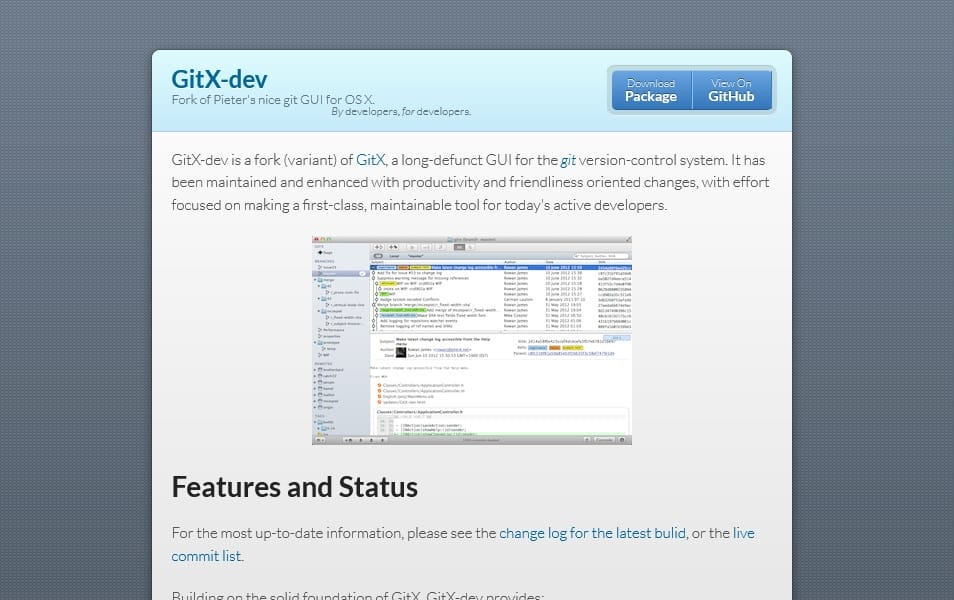

- Quick start gitup how to#
- Quick start gitup install#
- Quick start gitup update#
- Quick start gitup download#
In order to keep our project up-to-date with dependencies we use a tool called Renovate. If your team is not interested in this tooling, you can remove them with ease! Removing Renovate Cypress Netlify Build Plugin - to run our tests during our build process.Cypress - to run tests against how the template runs in the browser.
Quick start gitup update#
Renovate - to regularly update our dependencies. We’ve included some tooling that helps us maintain these templates. Use the Netlify CLI's create from template command netlify sites:create-template angular-quickstart which will create a repo, Netlify project, and deploy it. Head to the Netlify UI to deploy via GitHub or drag and drop the project folder. Click the 'Deploy to Netlify' button above. There are a few ways to deploy this template: A quick fix is to find/replace all instances of angular-quickstart with your project name. 🚨 If you decide to change the project name be sure to change it everywhere in the project including the Netlify configuration file, netlify.toml, as there are many places in Angular projects where the project name is used. We can query indexed attributes as follows: auto record_stream1 = mlog->execute_filter("cpu_util>0.5 || mem_availquery_filter("low_resources", 0, UINT64_MAX) įor (auto s = record_stream2 !s.empty() s = s.Alternatively, you can run this locally with the Netlify CLI's netlify dev command for more options like receiving a live preview to share ( netlify dev -live) and the ability to test Netlify Functions and redirects. It is straightforward to retrieve records given their offsets: auto record1 = mlog->read(off1) Įach of record1, record2, and record3 are vectors of strings. Now we take a look at how we can query the data in the Atomic MultiLog. This forms the "key" for records stored in the Atomic MultiLog - recordsĬan be retrieved by specifying their corresponding offsets. Of the timestamp - if the timestamp is not provided, Confluo will automaticallyĪlso note that the operation returns a unique offset corresponding to each append Vector must match the number of entries in the schema, with the exception The vector corresponds to a single record. Note that the append method takes a vector of strings as its input, where Table) this requires three parameters: name, schema, and the storage mode: std::string schema = ") We then create a new Atomic MultiLog within the Store (synonymous to a database We will first create a new Confluo Store with the data path for it to useĪs follows: confluo::confluo_store store("/path/to/data") Header file to include is confluo_store.h. In order to use Confluo in the embedded mode, we simply need to includeĬonfluo's header files under libconfluo/confluo, use the Confluo C++ API inĪ C++ application, and compile using a modern C++ compiler. In the stand-alone mode, Confluo runsĪs a daemon server process, allowing clients to communicate with it using 
In the embedded mode,Ĭonfluo is used as a header-only library in C++, allowing Confluo to use the sameĪddress-space as the application process.

Quick start gitup install#
Make -j & make test & make install Using Confluo ¶Ĭonfluo can be used in two modes - embedded and stand-alone.
Quick start gitup download#
To download and install Confluo, use the following commands: git clone Python Packages: setuptools, six 1.7.2 or laterįor java client, you will additionally require:.C++ compiler that supports C++11 standard (e.g., GCC 5.3 or later)įor python client, you will additionally require:.MacOS X or Unix-based OS Windows is not yet supported.
Quick start gitup how to#
In this Quick Start, we will take a look at how to download and setup Confluo,







 0 kommentar(er)
0 kommentar(er)
